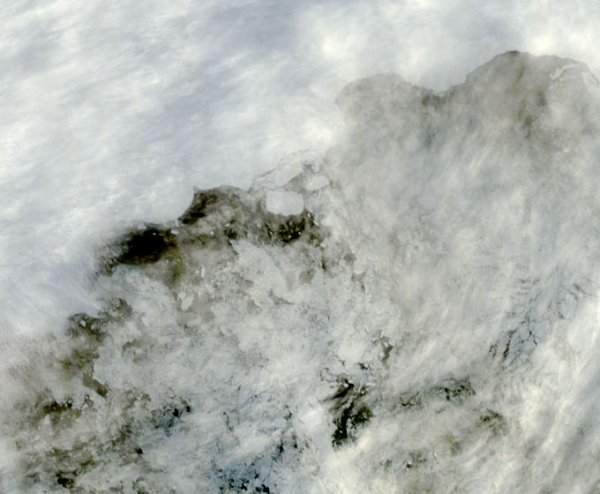Scientists have linked a massive earthquake and the subsequent Tohoku tsunami off the coast of Japan to the creation of large icebergs a hemisphere away.
Kelly Brunt, a cryosphere specialist at NASA’s Goddard Space Flight Center, recently confirmed that the March 2011 tsunami was responsible for the calving of icebergs from the Sulzberger Ice Shelf in Antarctica.

According to Brunt, the birth of an iceberg can occur in any number of ways, but after the tsunami, scientists observed new icebergs (about two times the surface area of Manhattan) floating off to sea shortly after the sea swell of the tsunami reached Antarctica.
“In the past we’ve had calving events where we’ve looked for the source. It’s a reverse scenario – we see a calving and we go looking for a source,” she explained.
“We knew right away this was one of the biggest events in recent history – we knew there would be enough swell. And this time we had a source.”
Indeed, scientists first speculated in the 1970s that repeated flexing of an ice shelf – a floating extension of a glacier or ice sheet that sits on land – by waves could cause icebergs to break off. The swell was likely only about a foot high (30 cm) when it reached the Sulzberger shelf.
But the consistency of the waves created enough stress to cause the calving. This particular stretch of floating ice shelf is about 260 feet (80 meters) thick, from its exposed surface to its submerged base.

“I didn’t have strong expectations either way whether we’d be able to see something. The fastest imagery I could get to was from MODIS Rapid Response, but it was pretty cloudy,” Brunt said.
“So I was more pessimistic that it would be too cloudy and we couldn’t see anything. Then, there was literally one image where the clouds cleared, and you could see a calving event.”
A closer look with synthetic aperture radar data from the European Space Agency satellite, Envisat, which can penetrate clouds, found images of two moderate-sized icebergs – with more, smaller bergs in their wake.
The largest iceberg was about four by six miles in surface area – itself about equal to the surface area of one Manhattan. All the ice surface together about equaled two Manhattans.






